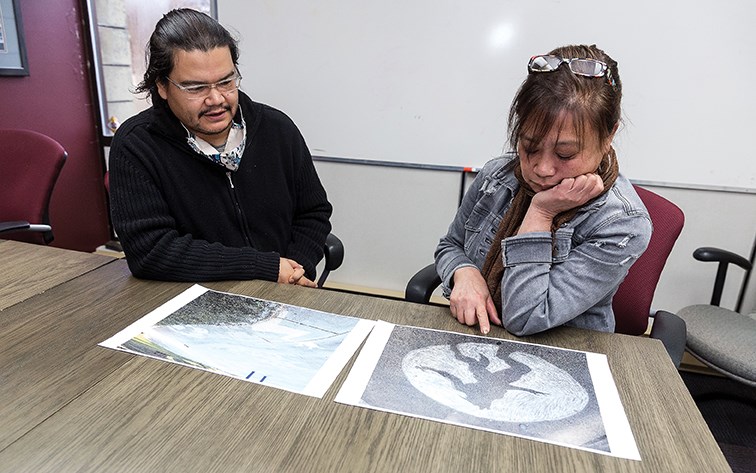Contrary to popular belief, you don't need to hit your head to develop a brain injury.
Seven years ago local resident Cody Stump was working as a longshoreman in Vancouver. Then suddenly, he started having migraine headaches and extreme fatigue, to the point where he was sleeping up to 14 hours a day.
"A buddy of mine took me to the hospital." Cody recalls. "I had an MRI done and when the doctor saw the results he told me I needed surgery right away. The doctor said he was amazed I walked into the hospital and was still standing."
The outcome of the MRI clearly showed Cody had cryptococal meningitis. This form of meningitis is contracted by exposure to soil tainted with bird droppings. How he came across this fungus cannot be confirmed.
Once this fungus enters the body, it attacks the brain. Cody showed me a picture of his MRI scan. I saw a very disturbing image of a white mass (the fungus) that had burrowed a hole in Cody's brain.
After his brain surgery, Cody spent 47 days recovering in the hospital. When he was discharged, he went to live with a friend and began trying to make sense of his new normal. He had lost his job, was plagued by debilitating migraines, poor short-term memory, hypersensitivity to smells, noise and lights and severe anxiety. At the time, his future looked pretty bleak.
"My doctor told me there was a brain specialist in Prince George." Cody said. "So I moved up here to be closer to family."
Cody found it was important for his mental health and self-esteem to keep busy. He spent time at his aunt's place, helping her look after her pigs and chickens. Then he started doing chalk art with his nephews - on sidewalks and exterior walls. Cody said he was a decent artist during high school but hadn't done any type of art since then. Many of his chalk drawings are of popular animated characters.
"My nephews really enjoyed my chalk art." Cody said. "And it was nice for me to see something come together with having a disability."
Then, last month Cody came across an article I had written about the value of art in healing brain injury. A bulb lit up for him.
"This was the missing piece of my jigsaw puzzle." said Cody. "I didn't have any therapy or rehab for my brain injury. I came up with my own therapy through art."
Cody does chalk drawings in parks and is often joined by strangers who are fascinated with his work. In addition to chalk art, Cody makes beautiful jewelry and ornaments with rope. This young man's creative talents are truly remarkable and inspiring.
Very recently, Cody was asked if he wanted to participate in a program at the college. BIG (Brain Injured Group) partnered with the college and developed a program to teach brain-injured students about basic automotives, carpentry and catering. Cody eagerly accepted this opportunity.
"This is helping me expand my capabilities and self confidence." Cody said." BIG is amazing. I looked for help when I was living in Vancouver and none of the places came close to what BIG does." He also credits his family and friends for providing him with support and encouragement.
When one has a brain injury, finding connection, meaning and purpose is extremely difficult. What most people would consider to be small and ordinary can be huge to a brain-injured survivor. When a light bulb goes on, it casts hope and direction.
Cody is a shining example of overcoming adversity and moving forward in life. His inner light brightens the path for everyone who comes into contact with him.



